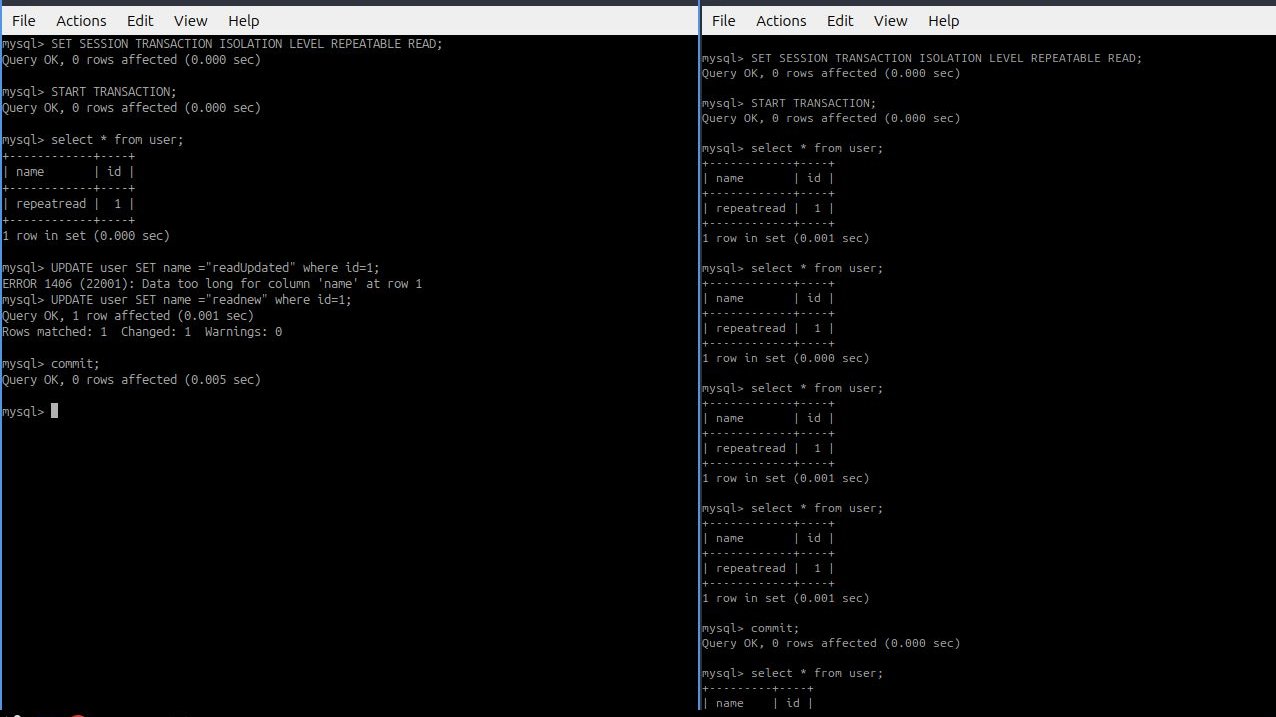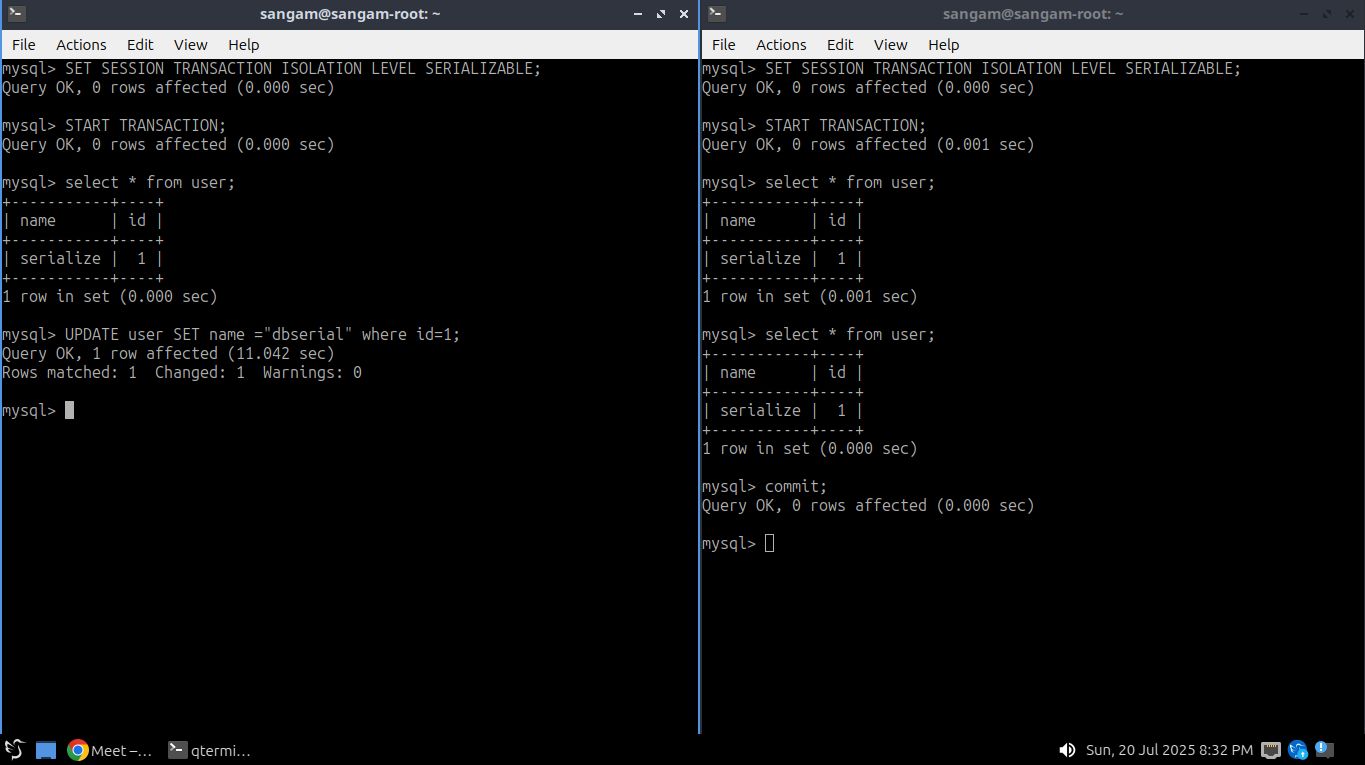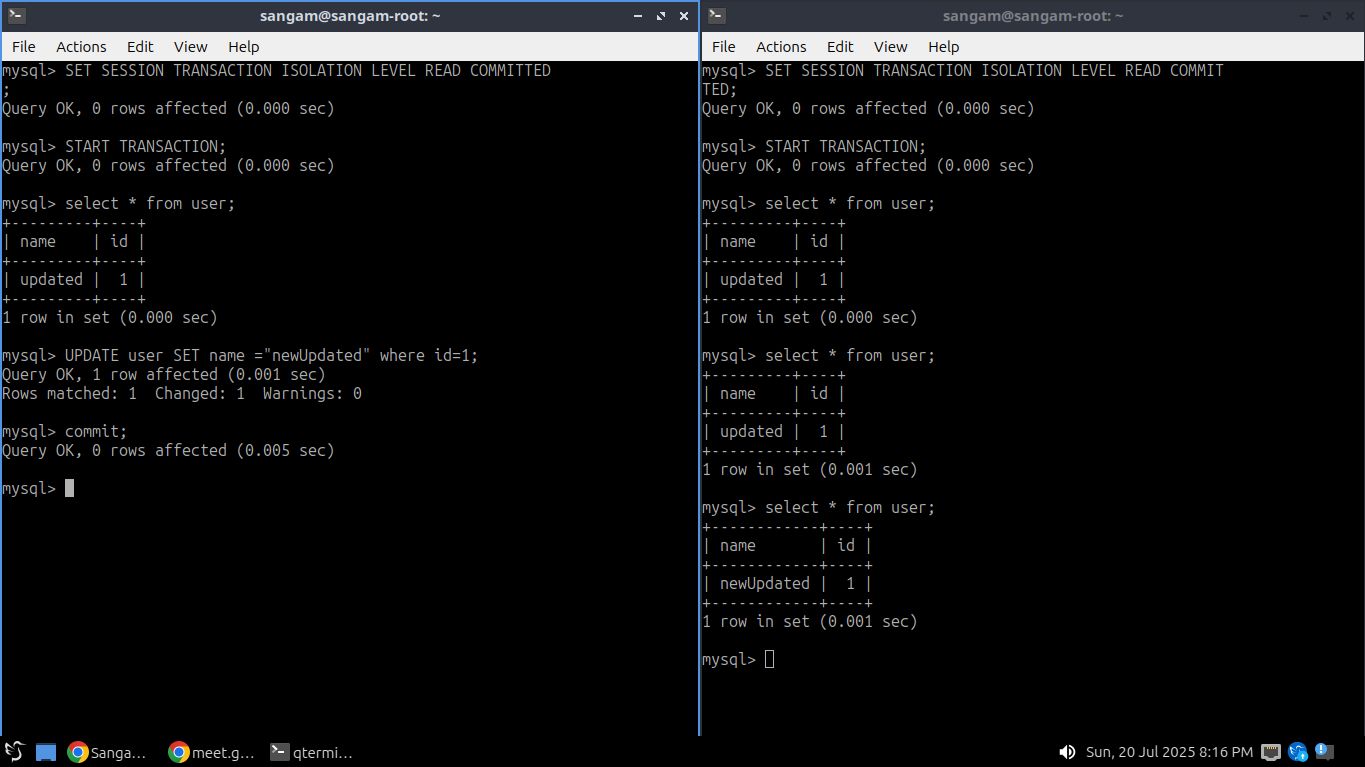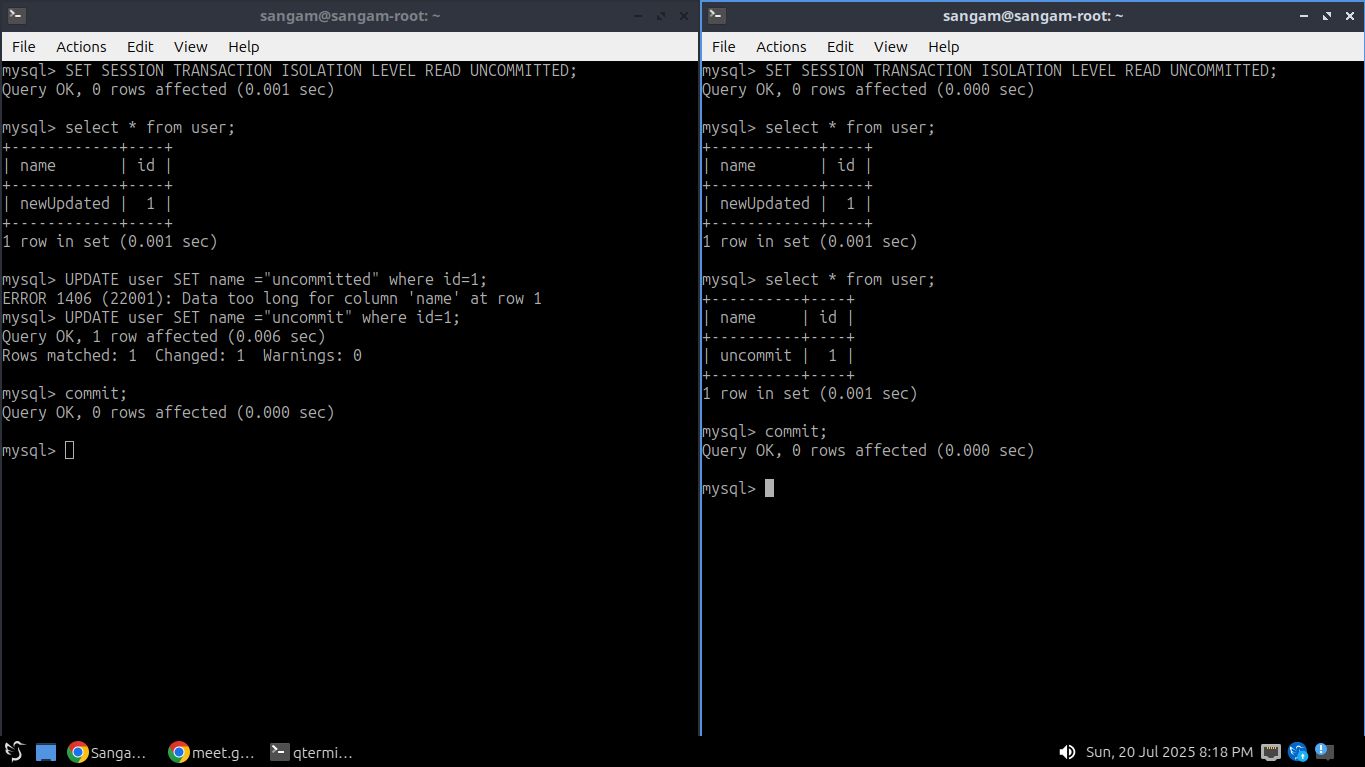sql core concepts
📅 19 Jul 2025
View on Github ↗date: 2025-07-19 topics: [sql, database, transactions, isolation, backend] day: 4
📘 Day 4 – Core SQL Concepts Revised + Hands-On Practice
✅ What I Worked On
- Revised foundational SQL topics using hands-on CLI practice
- Created markdown notes with query examples
- Simulated transaction isolation anomalies in PostgreSQL
- Documented all concepts with diagrams + real-world analogies
📚 What I Learned
- ✅ Transactions:
BEGIN,COMMIT,ROLLBACK— atomic, consistent operations - ✅ ACID Properties:
- A – Atomicity: All or nothing (e.g., ₹100 isn’t deducted if transfer fails)
- C – Consistency: Always valid data (e.g., no -₹50 balances)
- I – Isolation: No user clashes (e.g., only one person books a seat)
- D – Durability: Changes survive crashes (e.g., your booking is saved even after a power cut)
- ✅ Isolation Levels (with hands-on examples):
- 🔹
READ UNCOMMITTED→ dirty reads allowed - 🔹
READ COMMITTED→ no dirty reads; non-repeatable reads possible - 🔹
REPEATABLE READ→ consistent row reads; phantom reads may occur - 🔹
SERIALIZABLE→ strictest; full isolation, full locking
- 🔹
- ✅ Normalization:
- 1NF → Atomic columns
- 2NF → Remove partial dependency
- 3NF → Remove transitive dependency
- ✅ Database Design: foreign keys, indexing strategies, table relationships
- ✅ SQL Axioms & Keys:
- Primary Key
- Foreign Key
- Composite Key
- Candidate Key
❌ Blockers
- Took time to simulate and understand isolation-level behaviors (e.g., phantom reads)
- Differentiating
REPEATABLE READandSERIALIZABLEin practice
🧠 Reflection
Finally got clarity on why ACID matters in real-world apps — banking, ticketing, and payments. Simulating SQL anomalies in real-time made it all click. Isolation levels are no longer just theory — I can explain and apply them.



